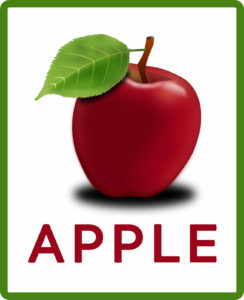Birth to Five Language for Real Life
Parenthood can be hard, and toddlers can make it even trickier. It’s not always easy to sit down and have structured time to expose kids to vocabulary and educational concepts, particularly in those early years. The good news is, there is an easier way! As speech therapists, part of our job is to teach parents how to incorporate critical language exposure in day to day activities, especially from birth to five. The first step, put down the technology. Yes, even those apps that claim to be educational. Your child is going to learn more by being included and involved in daily activities. So, what does that look like?
How to Incorporate Birth to Five Language Ideas
Narration
Your best friend is narration. I mean talk – a lot. Predictable, repeated exposures are how children gain vocabulary with context. Flashcards, for example, may show a child an apple in one depiction, but the understanding increases when they are able to observe this same word across multiple sizes, shapes, and environments. Label what you’re putting in the grocery cart or what they’re looking at down the aisle in the store. Keep it simple, one to three words, “yummy, apples!” or “you see balloons!”

Use play kitchen materials. Let them practice cutting an apple while you do the real thing across the counter. Toys don’t have to stay in the play room. Imitation of actions and sounds, “crunch, crunch!” are critical prelinguistic skills required for later verbal language. Talk about what you’re doing while you cook dinner, and they are impatiently circling your feet (or more likely, yelling at your feet). Narrate that too! “It’s so hard to wait… I hear that you’re hungry”. You’ve now exposed your child to emotion vocabulary, provided recognition of their feelings, introduced an early expectation of waiting, and opened the possibility for them to use words over reactions in the future. With repetition, they may start expressing that “hungry” feeling verbally instead of behaviorally.
Have Them Help
Help with the laundry. Help with the cooking. It may be messy, and it may take longer, but including children is going to keep them entertained and give them opportunities for language and communication. Can they guess what comes next for the lunch menu? Can you send them to get the apples from the fruit bowl? Doing this allows them to practice following directions, prepositional concepts, and early vocabulary, and hey – there’s that word “apple” again in a new representation. Sometimes helping is hard for kids, like those dreaded toy baskets. This is when you, as the parent, can model the behavior and communicate your expectations.
Children learn by observing. Get on the floor and clean up with them. Sing a clean up song. As it is repeated and used across environments, children may anticipate and begin to imitate. Give them choices, such as who gets the blocks versus the cars and request that they make a selection with a gesture or word. Again, you’ve just opened the possibilities for more communicative functions of language: requesting, negotiating, accepting and denying choices, labeling, and identifying locations, all while tidying up a room.
Expectations For Birth to Five Language
Know that even young children are capable of high expectations. This will, of course, vary based on your individual household, but expectation is a building block to good communication. Have an older sibling help a younger one wash their hands while you finish up dinner. They’re gaining exposure to sequencing, turn taking, and social skills. At the dinner table, serve a meal family style a few nights a week. Put all of the food in the middle or off to the side. Increase the communicative expectation by having children request what they want.
For a younger child, this may look like modeling the word “more”, waiting for an imitation, or even using sign language to express this need. For a preschool child, you can expand their utterance length by modeling “more apples” or “want chicken, mom” before adding it to their plate. Words like “please” and “thank you” are often loved by parents. However, they don’t have much meaning and don’t help us to recognize what a child really wants or needs as early communicators. Try to keep it concrete – the manners can come later.
MOSAIC Can Help!
Language development doesn’t have to feel like work. Speech therapists work together with parents every day to incorporate communication into play and functional activities. If you have concerns about how your toddler is reacting to your narration in daily activities, their ability to follow routine directions, or their imitation of rehearsed vocabulary talk to a speech therapist. A free screen to a speech therapist may give you more information about additional evaluation needs or supports/ideas to try – no doctor’s visit or referral required! Remember, parenting is hard enough, teaching your child to communicate doesn’t need to be!
Click here to learn more about speech, language, and hearing development from birth to five from the American Speech-Language-Hearing Association.
